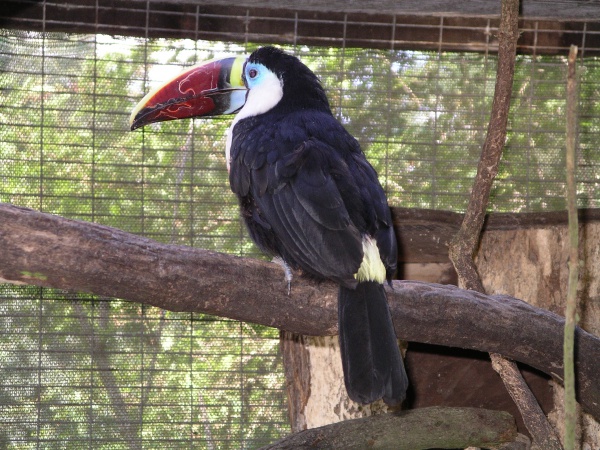Facts About White-throated toucan
The white-throated toucan is a striking bird native to South America, prominently inhabiting the Amazon Basin and its surrounding regions. These birds thrive in lush, tropical humid forests, but they can also be found in woodlands and riverine forests within the cerrado ecosystem. Previously classified as three separate species, they are now recognized as one species with several subspecies.
White-throated toucans are easily identifiable due to their distinctive appearance. They possess a large bill and measure between 50 to 61 cm in length, with a weight range of 425 to 830 grams. Their plumage is predominantly black, complemented by a white throat and breast, a yellow rump, and a red area under their tail known as the crissum. Males are typically slightly larger than females.
The diet of white-throated toucans is diverse. While fruits constitute the majority of their intake, they also feed on insects, lizards, eggs, and even small birds. Breeding occurs in tree cavities, with both parents sharing the responsibility of incubating the eggs. After hatching, the chicks remain in the nest for about six weeks before fledging. Even after leaving the nest, the young birds depend on their parents for food for several more weeks.
In captivity, the white-throated toucan, particularly the red-billed subspecies, is sometimes kept as a pet. However, prospective owners should be aware that these birds can be quite loud. It is essential to note that capturing toucans or any other protected wild bird from their natural habitat is illegal.

 Brazil
Brazil